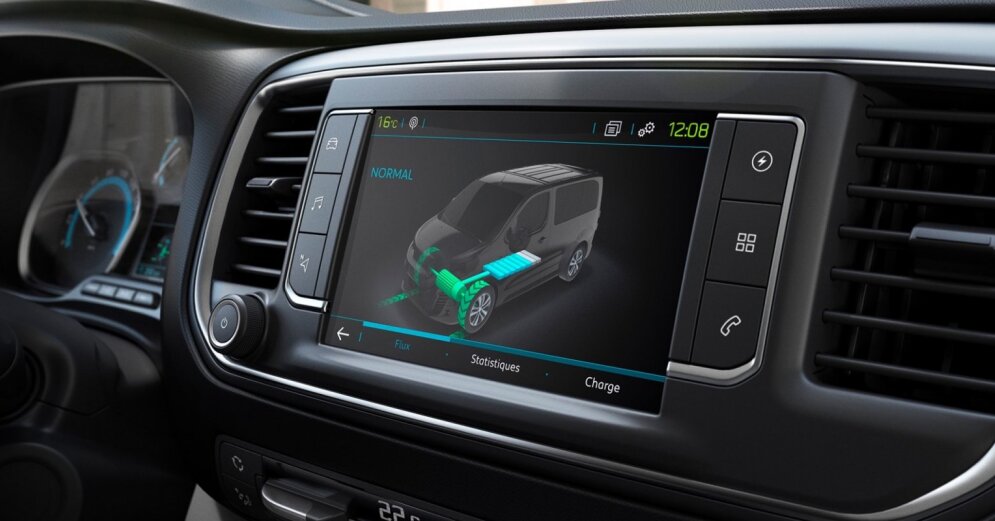More and more electric cars are entering the garages of private individuals, but the number of companies switching from internal combustion cars to electric ones is also increasing. Various advantages in operation, more favorable leasing interest rates and lower fees, as well as the possibility of driving into designated emission-free zones in cities in the future – these are all serious arguments in favor of electric transport.
–
–
Content will continue after the ad
Advertising
–
The popularity of electric cars in both the private and commercial car category is growing, also thanks to an ever-increasing supply. In the past year, Peugeot, Citroen, Volkswagen, Renault and Mercedes-Benz have started offering electrified minibuses in various sizes. For example, “Peugeot” offers all its commercial vehicles both with an internal combustion engine and with an electric drive, and the entire family is electric – from the compact “Partner” to the large “Boxer”.
What do companies need to know when considering purchasing green transportation? And how to use it effectively?
The best in town
Vitolds Milius, editor-in-chief of “Auto Bild Lietuva” magazine and representative of the Lithuanian Commercial Car of the Year Jury, says that the same principles apply to commercial vehicles that are followed in the operation of any machine, so the basics of rational and economical driving are no different.
Witold is a record holder for various distances, and last winter he went on two long journeys in electric Peugeots. In December, the traveler traveled 1,500 km from Rovaniemi in Finland to Vilnius with the “e-Expert” light commercial vehicle, and in February, he traveled 5,000 km in eight countries around the Baltic Sea in 110 hours with the “e-Traveler” light commercial vehicle. Both models were equipped with a 100 kW electric motor and a 75 kWh battery.
After returning, the editor of “Auto Bild” discovered that the cars perfectly coped with the long road even in winter conditions. Even in the far north, the 75 kWh e-Expert battery had a range of 200 km on a single charge, and the 100 kW fast station could charge it up to 80% in 30 minutes. But with smart use of regenerative braking, the distance to be covered is even very solid.
“All electric cars are good in the city, because they recover energy when braking. Electric commercial vehicles, on the other hand, are perfect if you need to deliver goods in the old town and the city center, because you can do it without creating CO2. The mileage reserve is enough to drive around the city for all eight working hours.” Witold is convinced.
The journalist believes that the electric commercial vehicle is not yet ready for long-distance transportation. You can carry cargo, for example, from Vilnius to Klaipeda (300 km), but this route will take a lot of time, so it is not profitable at the moment. Another thing – in the city. “Try to drive 200 km around the city in one day. I have more than once wanted to understand how many different plug-in hybrids can really drive around the city until the internal combustion engine starts up, and you know – you can really do a lot. The city has favorable conditions for electric driving: speed is relatively small, the energy can be recovered by rolling down the hill and smart braking. Therefore, the 200 km that can actually be driven is quite enough, especially if the entrepreneur has the opportunity to charge the car overnight and drive during the day,” explains Witold.
Easier to maintain
Under normal conditions, a fully charged electric van such as the e-Expert, which the editor of Auto Bild thoroughly tested on a long-distance trip, can cover up to 330 km (WLTP figure). Another important aspect is practicality: the carrying capacity of electric cars does not differ from internal combustion versions. In addition, since the drive is simpler and has far fewer wearing parts, another aspect of cost-effectiveness emerges. “Maintenance of an electric car is much simpler. Most nodes are controlled by electronics that inform the driver of their condition. And what is not unimportant, if you drive around the city, there are many places to charge,” says the expert.
The battery is one of the most expensive elements of an electric car, but manufacturers give them a long enough warranty. For example, the aforementioned Peugeot high-voltage battery has an eight-year or 160,000 km warranty. Such a period exceeds the typical term of leasing and operating leasing.
For the convenience of car owners, manufacturers offer smart device apps that can be used to remotely monitor the charging speed and level. This saves time because when the reserves are restored almost to the maximum point, the charging slows down, so there is no point in waiting any longer.
The charging capacity that an electric car can accept is very important, because it determines the daily charging speed and indicates whether it will be possible to use fast stations. “Universal advice for all those who drive a lot – just don’t miss any opportunity to charge the car. If, for example, you arrive at a warehouse and have half an hour free during loading or unloading, connect the car to the station. With all such options, battery reserves should not be a concern.” summarizes expert Witold.
–


